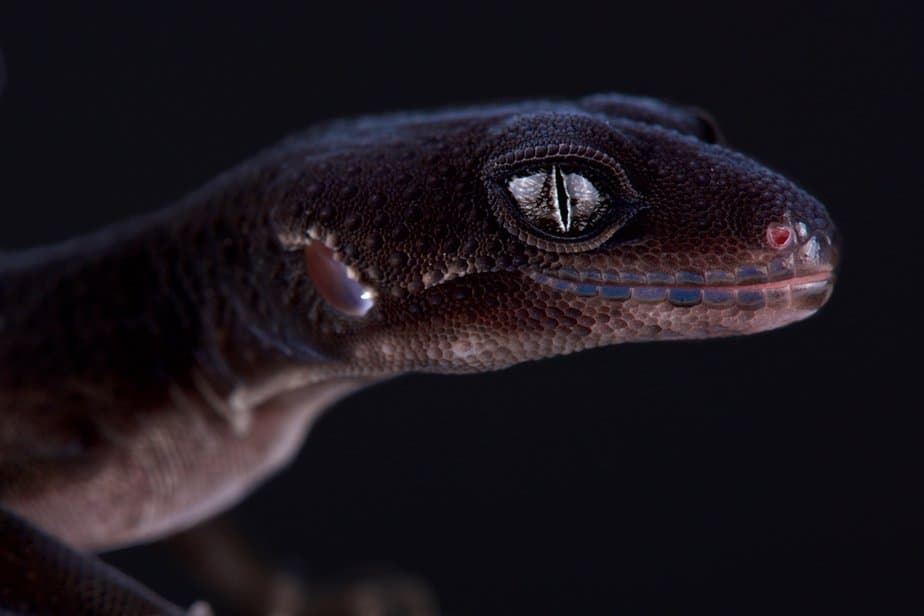If you’ve been keeping leopard geckos for a while, you know they are not all the same – each morph has unique characteristics.
Black night and black pearl leopard geckos are different, even though their names are similar. And in today’s post, we are going to delve into their differences.
Black night leopard geckos usually have white bellies but are black everywhere else. Black pearl leopard geckos are also black, but they have white markings that look like pearls all over their bodies. Both are rare but black pearl are rarer and more expensive than black night.

While the main difference between black night and black pearl leopard geckos lies in their appearance, they have a few other differences. These are usually in their origins, availability, and price.
Key differences between black night and black pearl leopard geckos
Color and pattern
Scientifically known as Eublepharis macularius, black night leopard geckos usually have white bellies but are black everywhere else.
This is because their skin has excessive melanin. While a few of them have spots, this is rare. Black night geckos tend to get darker with age.
Although black pearl leopard geckos are also black, they have white markings that look like pearls all over their bodies.
One of the most interesting things about black pearl leopard geckos is that they change their color a bit during the breeding months.
They usually change from deep black to velvet black. This characteristic earned these geckos the name black velvet leopard gecko.
Availability and price
Since black night leopard geckos are rare, they are expensive. To get one, you’ll need to spend $1200 to $4000.
However, black pearl leopard geckos are even rarer and more expensive. You’ll need to spend at least $3000 to get one.
To make matters worse, you can only buy the females of this leopard gecko morph. The males aren’t sold, particularly because these reptiles are in high demand.
Origins
Black night leopard geckos originated from the Netherlands while the black pearl ones originated from Hong Kong.
However, these two morphs were developed in the same way – people bred the darkest leopard gecko morphs over generations. Since black pearl leopard geckos were developed through more inbreeding than black night ones, some of them tend to be weaker.
Keep in mind, though – developing one of these leopard gecko morphs at home is difficult.
Even if you do find their male and female versions, it’s not guaranteed that you’ll get your desired result.
Key similarities between black night and black pearl leopard geckos
Even though the black night and black pearl leopard geckos have some differences, they have many more similarities.
After all, leopard geckos generally have the same needs and behaviors. Some of these include:
Temperature requirements
No matter what morph of leopard gecko you have, it will require the same tank temperature conditions. These are usually 80 to 85 degrees Fahrenheit during the day and around 70 degrees Fahrenheit during the night.
Keep in mind, though – the basking area should be kept at 88 to 90 degrees Fahrenheit.
These temperatures mimic the ones of the deserts and arid areas that leopard geckos are native to.
Humidity requirements
To ensure that your leopard gecko stays healthy and comfortable, ensure that its tank humidity level is maintained between 30% to 40%.
This humidity level mimics that of your leopard gecko’s native habitat and allows for proper shedding.
If you notice that your gecko’s tank is less humid than this, mist it or just add a bowl of water to it.
On the other hand, if the tank has high humidity, open its door or other openings.
Dietary requirements
All leopard geckos eat the same type of food – worms. Crickets and mealworms are particularly popular among leopard geckos.
However, you can also add other worms with higher calcium-to-phosphorus ratios.
Whatever you go with, though, ensure you gut load and dust the feeder insects before offering them to your leopard gecko. Also, ensure that you always provide a bowl of water.
Tank setup
Since all leopard geckos are terrestrial, you need to get them a tank with adequate floor space. A 20-gallon glass tank with a bigger width and length than the height is particularly great for this.
It will give your leopard gecko enough space to walk around and let you monitor it from afar.
Just ensure that you set up the tank appropriately. Provide enough hides, hiding spots, rocks, and other accessories that will keep your pet occupied.
Final thoughts
When it comes down to it, it’s easy to confuse a black night leopard gecko for a black pearl one.
However, with a bit of keenness and practice, you can learn to tell them apart. If you still don’t trust yourself with this, just contact a breeder you trust.
These professionals usually know everything about the leopard geckos they sell, including their appearance, availability, price, and origin.
